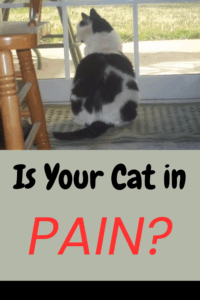It can be difficult to tell when our beloved dogs and cats are in pain or need extra care. In this guide, you’ll learn how to recognize the signs your dog or cat may be in pain and when to call the vet. You’ll learn about providing pain relief, and even how to find affordable pet insurance to help cover the cost of treatment.
Whether you’re caring for an aging dog, a senior cat, or just want to be prepared, this post will help you keep your furry friend comfortable and healthy.
In this post, we’ll cover:
-
- How to Tell if Your Dog is in Pain
- Signs Your Dog May Be in Pain
- Tips on Caring for a Senior Dog
- How to Tell if a Cat is in Pain
- Signs Your Cat May Be in Pain
- Tips for Caring for Senior Cats
- Pain Relief for Dogs and Cats
- When to Call the Vet
- Help Getting Affordable Pet Insurance
👉 Want a healthier, happier dog? See why I recommend The Ultimate Dog Health Guide
👉 Want a healthier, longer life for your cat? See why I recommend The Complete Cat Care Guide
This post contains affiliate links. If you make a purchase, I’ll earn a commission (at no extra cost to you). As an Amazon Associate, I earn from qualifying purchases. I donate 10% of my profits to animal charities.
How to Tell if Your Dog is in Pain
Dogs don’t come with a built-in alarm system for when things aren’t peachy. Often, they show pain in ways that aren’t super obvious to us humans.
Understanding typical pain behaviors in dogs can help you catch on quicker when something’s not right. Here are some signs your dog may be in pain:
Change in demeanor. One of the big giveaways that your dog might be in pain is a change in their demeanor. Is your usually friendly pooch avoiding pats or hiding away more than usual?
That’s a telltale sign that something’s off. Acting withdrawn or cranky can hint at discomfort even before more obvious signs appear.
Physical cues are also a dead giveaway. Watch out for limping, whining, or changes in their eating habits. A dog in pain might skip meals or treats, which usually never happens in a healthy dog.
Any noticeable efforts to avoid putting weight on a limb or wincing when touched could mean they’re in distress.
Emotionally, you might see shifts too. A normally chill dog might become snappy or show unusual aggression. Sometimes, dogs in pain also become unusually clingy, following you around like they’re glued to your side for reassurance.
Remember too, the breed and age of your dog can play a big role in how they express pain. Some breeds are stoic, while others are more vocal when something’s up.
Younger dogs might react differently compared to an older furry friend whose tolerance could be lower due to age-related issues.
Tips for Caring for a Senior Dog
If your dog is elderly, check out my post, 10 Tips When Caring for a Senior Dog (includes video!) Senior dogs need their owners to be hyper aware then they may be in pain or having other difficulties.
How to Tell if a Cat is in Pain
Cats often prefer to keep their troubles to themselves, making it tricky to spot they’re hurting. We’ll talk about the serious of that in a minute. Unlike dogs, cats might not show obvious pain signs, so being tuned into any unusual behavior is key. Here are some signs your cat may be in pain:
When your cat is in pain, one of the first shifts you might see is in their behavior. They may start acting a bit grumpier or isolate themselves from you and other pets. These are flags that something’s amiss.
Physical signs in cats can also tip you off. Pay attention to changes in grooming habits. Cats in pain might groom less—leading to an unkept coat—or they might over-groom certain areas trying to comfort themselves.
Check also for litter box mishaps as these can point towards issues such as arthritis or urinary tract discomfort. I have some experience with this one.
I had a cat who lived 20 years. That’s her in the pic above. She was a beautiful girl! Anyway, when she was about 14, she suddenly started peeing on my bath matt! It was beyond strange because I never had a problem with her; she always used her litter box!
So I took her to the vet and it turned out she had a bladder crystal. The vet said, “It hurts when she pees. So she’s trying out different spots because she thinks it has something to do with the litter box!”
You can hear more about that story in my video, Your Cat Thinks the Litter Box Did It!
Watch their movement and listen carefully. If climbing up their favorite perch is suddenly a no-go, or if they’ve become more vocal with meows or growls, something might be up.
If they normally jump up on the coach or sleep in bed with you and they suddenly don’t, that may be a sign they’re unable to jump up.
The environment your cat’s in can affect pain display too. Stressful situations like moving, bringing a new baby, person or pet into the house could exacerbate discomfort. Check out my video, 10 Things That Stress Your Cat Out! You’ll be surprised by some of these!
Tips for Caring for Senior Cats
If your cat is elderly, check out my post, How to Help an Aging Cat (includes video)! As cats age, they’re more likely to feel the pinch from joint issues or other chronic pains, so pay close attention to senior cats.
Cats Will Hide Pain!
In the wild, cats are prey. Because of that, they have a primal instinct is to hide pain or weakness. So if your cat is showing any of the signs of pain we’ve talked about, or any change in behavior, it’s wise to call the vet sooner rather than later.
Chances are they’ve been hiding it, but now it’s gotten serious and they can’t hide the symptoms any longer.
Sadly, I experienced this. I had a beautiful black cat named, Miss Abigail. That’s her in the pic above. She started vomiting. I thought it was reasonable to wait a day or two and see if it would pass. Mistake!
Turns out she hadn’t been eating, which I didn’t know because I had two cats at the time. The food in the dish was going down – but I had no way of knowing who was eating, and how much.
Miss Abigail was slightly overweight. The vet said that if a fat cat stops eating, they can get Fatty Liver Disease. That’s what she had and sadly, she died. She was only 9 years old.
Insert sobbing.
I’ll never forgive myself for 1) not realizing I should’ve been keeping their food separate so I could monitor their intake and 2) that I didn’t realize if a cat is vomiting, it’s probably already serious.
I’m sorry, my sweet girl. 🙁
Pain Relief for Dogs and Cats
Recognizing and addressing pain in pets is crucial, and understanding your options for pain relief can make a big difference. While it’s tempting to solve these issues on your own, some treatments can be harmful, so it’s essential to be informed.
I can’t say this enough: it’s best to call your vet if you think your pet is in pain. Don’t take chances with your pet. I’ve found, with more than 40 years of pet ownership under my belt thus far, that calling the vet is faster, easier and more effective than trying to solve things myself.
We’ll talk more about that in a minute.
There are safe home remedies and over-the-counter solutions that might offer some relief. For instance, supplements like glucosamine can support joint health, and certain anti-inflammatory medications can help with pain.
You can find some pet pain remedies on Amazon. But please, always check with a vet before giving your pet any meds, even ones made for animals.
A personalized pain management plan is a game-changer. Every pet is different, so it’s worth discussing with your vet what works best for your furry friend.
Untreated pain in pets isn’t just uncomfortable. It can impact their overall health, leading to decreased quality of life or even more serious complications. Understanding when a situation needs veterinary attention is as important as the treatment itself.
When to Call the Vet
So when do you make that call to the vet? If your pet is showing any of the signs of pain we’ve talked about in this post, or if they have sudden behavior changes of any kind, it’s wise to just call. You may not even have to rush your pet in; your vet’s office may give you advice over the phone as to whether they feel it’s urgent.
Veterinarians can suggest advanced pain relief options and have more powerful tools at their disposal to diagnose and manage pain. Collaborating with them, you’ll ensure your pet gets the care they need, increasing their comfort and happiness.
For more information on what it’s time to call the vet, check out this post from thecovets.com, Signs Your Pet is in Pain (and what to do).
Affordable Pet Insurance
Wondering if you should call the vet when your pet is having a problem is one of the reasons I always recommend pet insurance. There are policies starting at $10 per month from companies like Lemonade Pet Insurance.
If you have even a basic policy, you’ll be much less likely to put off calling the vet because you won’t be so afraid of the vet bill! It’s best to make decisions for your pet based on their behavior and symptoms, not based on your finances.
To easily compare pet insurance plans, get free quotes, and get a policy that’s right for you and your pet, check out my post, Compare Pet Insurance the SMART Way! It’ll guide you to an easy pet insurance comparison tool that’ll save you a ton of time.
Disclaimer: I am not a veterinarian. This post is for informational purposes only. Please consult your veterinarian whenever you’re concerned about your pet’s health.
More Help with Pet Health
- How Pets Improve Your Health
- Help with Vet Bills: Ways to Pay for What Your Pet Needs
- Pet Health: Your Love Is the Best Medicine
- Pet Flea & Tick Control
- VetApprovedRx.com Review
- What Is Advantage II & How Does It Work?
- Free Spay or Neuter Clinics
- Is Your Pet in Pain?
- Foods Poisonous for Dogs and Cats
I Donate to Animal Charities
Thank you for visiting! I hope these tips will help you determine what’s happening with your pet and what you can do if you think your pet may be in pain. If you found this helpful, please share it with other pet lovers!
You should know I receive a small commission for some of the products and services I discuss in my posts. I donate 10% of my profits to the animal charities listed on this page.
Please feel free to comment below with questions, or share your experiences with other pet owners if you think it might help someone! Debra



















Recognizing pain in pets can be surprisingly difficult, especially since many animals instinctively hide discomfort. I’ve noticed that subtle changes in behavior, like reduced playfulness or slight limping, were actually signs of something more serious in my dog. It’s easy to overlook these cues without proper awareness. I wonder how many pet owners mistake chronic pain for aging or mood swings. It’s such an important topic that deserves more attention, especially since early intervention can make a huge difference in their quality of life.
It certainly can!